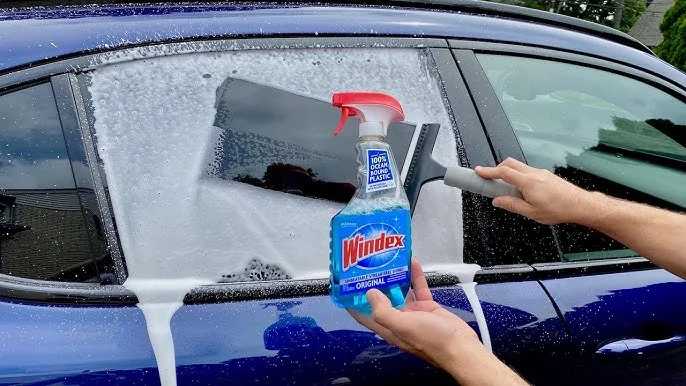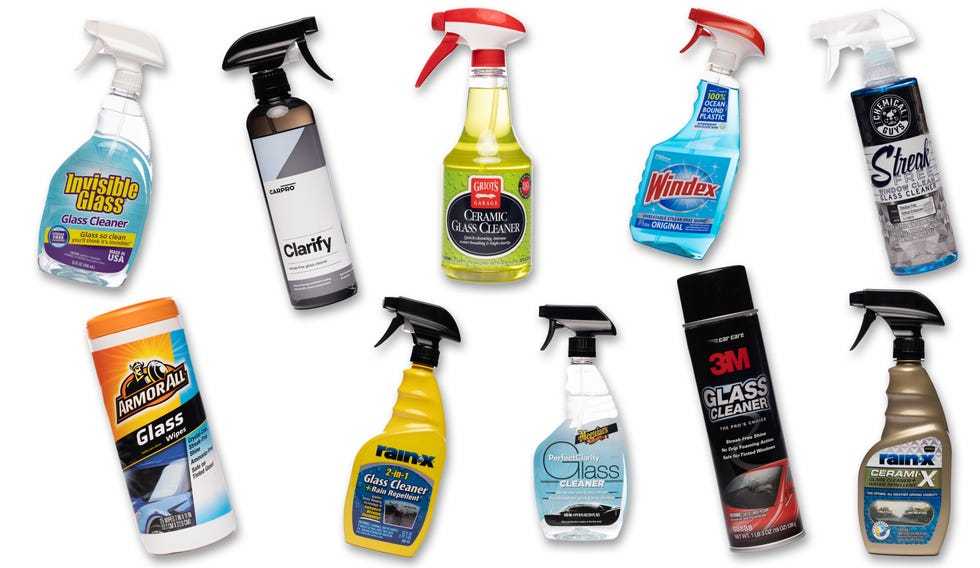The back glass of a car is called the rear windshield or rear window. It’s an essential part of your vehicle, providing visibility, protection from the elements, and contributing to the car’s overall structure and aerodynamics. When someone asks about the back glass, they’re usually referring to the large pane of glass at the rear of the vehicle that allows you to see behind you while driving. This piece can sometimes be heated or tinted for added comfort and safety. Knowing its proper name helps you communicate better with repair shops or know what to ask for if it gets cracked or damaged. Whether for maintenance or replacement, understanding what this part is called makes vehicle care much simpler and more straightforward.
If you’re curious about the back glass of your car, it is commonly known as the rear windshield or rear window. This integral component offers clear sight lines and contributes to your vehicle’s safety and design, making it a crucial feature in every car.
When it comes to your car, the back glass isn’t just a simple window—it’s an important safety feature that often includes heating elements to prevent frosted or fogged-up visibility, and sometimes even wiper blades for better clarity. It’s designed to keep the rear of your vehicle protected from debris, weather, and theft, while also maintaining the aesthetic appeal of your car. Knowing what it’s called and understanding its functions can help you better appreciate this often overlooked but vital part of your vehicle.
What Is the Back Glass of a Car Called? Exploring the Rear Window and Its Components
The Rear Window: The Primary Back Glass of a Car
The back glass of a car is commonly known as the **rear window**. It is the large glass panel located at the back of the vehicle, providing visibility for the driver to see behind. This window is often made from specialized glass to ensure safety and durability.
Many drivers refer to it simply as the **rear windshield**, especially in the context of passenger vehicles. In some regions, the term **rear glass** is also used to describe this component. The rear window plays a vital role in safety, comfort, and aesthetics of the car.
Materials Used in Manufacturing the Back Glass
The back glass is primarily made from **tempered glass** or sometimes **laminated glass**. Tempered glass is treated so it breaks into small, blunt pieces if shattered, reducing injury risk. Laminated glass has a plastic layer between two glass sheets, preventing shattering and enhancing safety.
The choice of material depends on the make and model of the vehicle. **Tempered glass** is common in most cars because it is lightweight and resistant to impact. **Laminated glass** can provide additional security and sound insulation.
Differences Between Tempered and Laminated Glass
Understanding the differences between these two types of glass helps in grasping their functions:
- Tempered Glass: Breaks into small, manageable pieces, used mainly for the rear window and side windows.
- Laminated Glass: Remains largely intact after impact, used primarily for windshields but sometimes for rear windows in luxury vehicles.
The main goal is safety: tempered glass minimizes injury, while laminated glass enhances security by preventing easy breakage.
The Role of the Back Glass in Vehicle Safety
The rear window is crucial for safety because it offers the driver a clear view of the traffic behind. A damaged or dirty back glass can impair visibility, increasing risks of accidents.
Furthermore, the back glass often contains **defrosting lines**—thin wires embedded in the glass that help melt snow and ice. These lines are connected to the vehicle’s heating system and improve rear visibility in cold weather conditions.
Features and Functions of the Back Glass
Beyond visibility, the back glass also offers several additional functions:
- Defrosting and Defogging: Heating elements clear frost and condensation for better rear vision.
- Embedded Antennas: Some rear windows have antennas for radio or GPS signals built into the glass.
- Rear Wiper Compatibility: Many vehicles have wipers that clear the rear window, especially in hatchbacks and SUVs.
- Security Features: Laminated glass makes it harder for thieves to break in through the back of the vehicle.
These features collectively enhance safety, convenience, and vehicle security.
The Design and Shape of the Back Glass
The shape of the rear window varies among vehicle types. Sedans, SUVs, hatchbacks, and vans have different designs tailored for aerodynamics and style.
Some back glasses are curved for aesthetic appeal and to match the vehicle’s aerodynamic profile. **Tinting** is often applied to reduce glare and heat inside the vehicle. Tints are available in different shades and colors to suit user preferences and legal requirements.
The Importance of Proper Back Glass Maintenance
Maintaining the back glass is critical for a safe driving experience. Regular cleaning prevents the buildup of dirt, snow, and debris that can obstruct visibility.
Inspecting the defrosting lines and the glass surface for cracks or chips is necessary for safety and to prevent further damage. If cracks are present, replacing the back glass promptly helps maintain safety and vehicle integrity.
Replacing and Repairing the Back Glass
When the back glass breaks or becomes severely damaged, replacement is necessary. The process involves removing the old glass carefully to avoid damage to the vehicle’s body and installing a new one securely.
Professional installation ensures proper sealing and functionality of defrosting lines and antennas. DIY replacements are not recommended due to the precision required and safety concerns.
Related Topics: Tints, Defrosting, and Advanced Features
Many modern vehicles come equipped with **advanced back glass features**, such as:
- UV Protection: Blocks harmful rays to keep the interior cooler and protect passengers.
- Privacy Tints: Dark tints for privacy and security.
- Integrated Cameras: Used in backup assistance and parking systems.
- Smart Glass Technologies: Glass that can change transparency or reflectivity at the push of a button.
These innovations enhance vehicle safety, convenience, and comfort.
How to Choose the Right Back Glass for Your Vehicle
Selecting the appropriate back glass depends on your vehicle’s make, model, and your preferences. Considerations include safety features, tinting options, and compatibility with existing defrosting and antenna systems.
Consulting a professional ensures the correct fit and features. The right back glass will improve your driving experience and vehicle longevity.
Environmental and Safety Regulations Regarding Back Glass
Many countries have regulations about the types of glass and tinting permitted on the rear window. For example, some areas restrict the darkness of tints to ensure visibility.
Manufacturers design back glass with these regulations in mind, integrating safety features that comply with legal standards. Adhering to these regulations helps avoid fines and ensures your vehicle remains safe for all users.
Summary: Why the Back Glass Matters
The back glass, or rear window, combines safety, functionality, and style. It plays a vital role in ensuring rear visibility and supporting features like defrosting, antennas, and security.
Understanding its components, materials, and maintenance helps extend its lifespan and maintain safety on the road. Whether replacing or upgrading, choosing the right back glass is crucial for your vehicle’s performance and safety.
—
This detailed overview emphasizes the significance of the back glass in vehicles and covers every aspect from materials to maintenance. Keeping this essential component in top condition ensures safety, comfort, and style every time you drive.
How do lines in your car's rear glass save your life? |Joule heating| Science Insights | Embibe
Frequently Asked Questions
What part of a vehicle is the back glass known as?
The back glass of a vehicle is commonly called the rear windshield or rear window. It is the large piece of glass at the back of the car that provides visibility for the driver and passengers, while also offering protection from external elements.
How does the back glass differ from other windows in a car?
The back glass is typically made from tempered or laminated glass, designed to withstand impacts and prevent shattering. Unlike side windows, which are usually smaller and may roll down, the rear windshield is fixed in place and often incorporates features like defrosters or antennas built into the glass.
What are common issues related to a vehicle’s back glass?
Common problems include cracks, chips, or shattered glass caused by debris, accidents, or temperature changes. Damage to the rear window can impair visibility, compromise safety, and may require repair or replacement to restore the vehicle’s integrity.
Can the back glass of a car be tinted or customized?
Yes, the rear windshield can be tinted or customized to improve privacy, reduce glare, and block UV rays. Many drivers choose to add tinting films or have the glass replaced with tinted versions to enhance comfort and privacy inside the vehicle.
Why is the back glass important for vehicle safety?
The back glass provides crucial visibility for reversing and lane changes, helping prevent accidents. It also supports the overall structural integrity of the vehicle, especially in roll-over situations, and can contain safety features like defrosters to maintain clear visibility in adverse weather.
Final Thoughts
The back glass of a car is commonly called the rear windshield. It provides visibility and protection from external elements while maintaining the vehicle’s structure.
This glass often includes features like heating elements or defrosters to prevent fogging and ice buildup.
In summary, the back glass of a car called the rear windshield, plays a vital role for safety and visibility.



